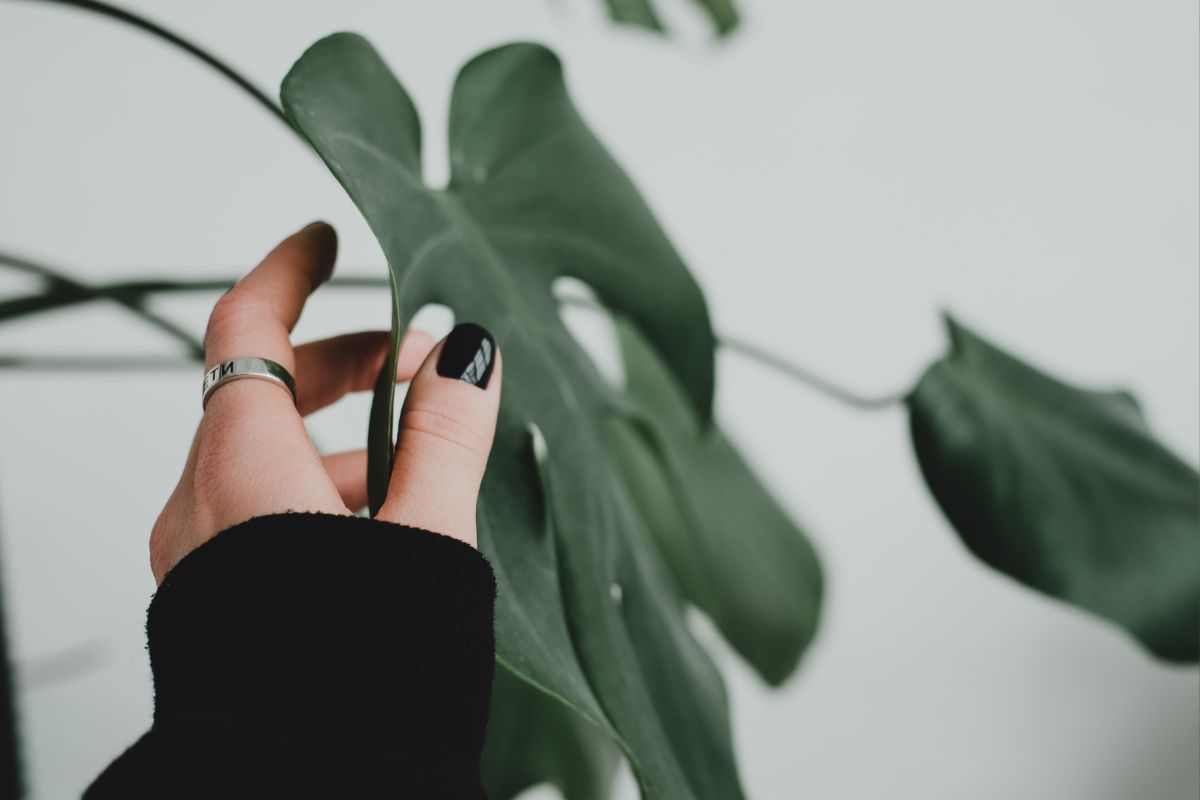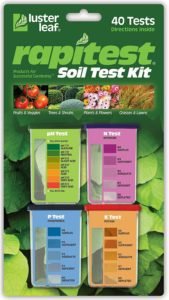Monsteras, (the most popular being swiss cheese plants), are prized for their large, unique leaves with their signature fenestrations, or naturally forming holes. However, when these centerpiece leaves begin to curl, you’ll need to inspect the growing environment to correct for any imbalance that might be stressing out the plant.
Why monstera leaves curl
There are many reasons why a monstera’s leaves may be curling, which is why an attentive inspection of the plant’s potting soil and other growing conditions is important to resolve the problem at its root. Monsteras are tropical rainforest natives, which should be your reference for the ideal growing conditions for an indoor monstera. The main causes of monstera leaf curl include:
- underwatering
- overwatering
- low humidity & cool temperatures
- direct sunlight & heat stress
- low light
- watering with hard water
- pest infestation
- fertilizer stress
Underwatering
When a plant doesn’t get enough water, the leaves will begin to curl as it taps into its internal store of moisture. Dehydration is one of the main reasons a plant’s leaves may be curling, and several factors may lead to a plant being underwatered.
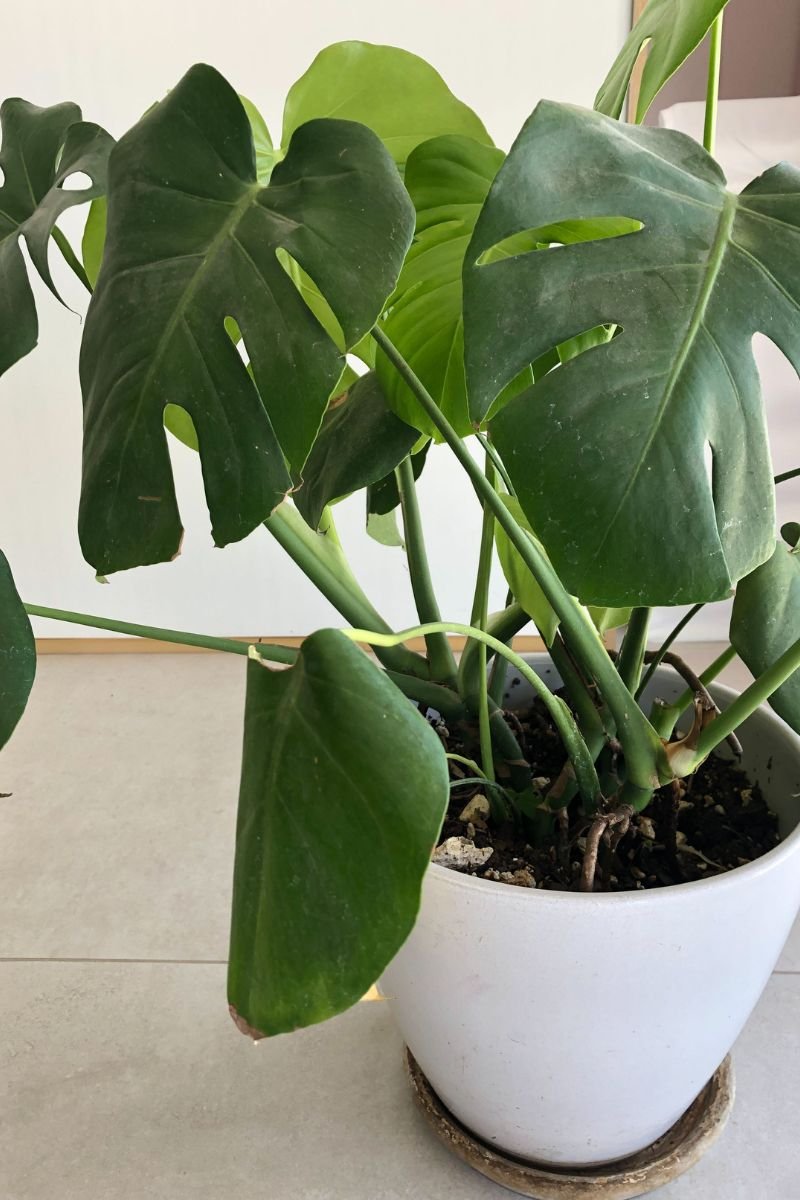
Monsteras are native to Central American rainforests, where they are epiphytes or plants that grow on other plants. They are vining plants that attach themselves to tree trunks in the understory, where there’s lots of moisture in the air and in the ground.
They have thin, fine roots that remain in the upper levels of the topsoil, which contain moisture-retaining organic material that drains well but stays relatively moist. A monstera should be watered about once a week, never letting the soil dry out completely. The reading on a moisture meter shouldn’t go below a 3.
The growing medium can affect how well a monstera stays hydrated: soil rich in organic material like worm castings, coco coir, and compost will hold moisture for several days between waterings.
A monstera plant can grow very fast, however, and if its roots grow too big and the plant becomes root-bound, that soil gets displaced by tightly wound roots. The more roots there are, the less and less moisture the pot can hold over time. A monstera should be repotted every year or two to be sure the pot is the right size for your plant. Smaller pots dry out faster since they hold less soil and water, so a pot should be large enough to accommodate the size and age of the monstera.
Overwatering
While a monstera likes its roots to stay moist, it can become a problem if they are too wet. As an epiphyte, the plant’s ground roots are smaller and more fragile than plants with more robust tuberous or woody roots.
These roots don’t store much moisture or nutrients, since those are absorbed in abundance from the air and surface of a host tree. The fragile roots, located in the well-draining upper levels of the topsoil, can be easily damaged by too much moisture, especially smaller plants.
When a monstera’s roots are damaged, it will prevent oxygen, moisture and nutrient uptake, and the leaves will begin to curl as they tap internal reserves.
The most common ways your plant may be overwatered include:
- watering too frequently
- using too large of a pot (water accumulates at the bottom of the pot instead of draining, creating a swampy mess for the roots)
- using a pot without drainage holes
- compacted soil
To prevent overwatering your monsteras:
- allow the top 2 inches to dry completely, which is vary based on the size of the plant and pot
- use a moisture meter (a monstera likes to be watered when it reaches a 3!)
- use well-draining soil with coarse materials like orchid bark or perlite, in addition to porous organic material like compost
- don’t use too large of a pot
- use a pot with drainage holes
If the soil stays wet for a whole week between waterings, it’s either too large for the plant or doesn’t have drainage holes. Environmental factors like the amount of light, ventilation, temperature, and humidity level can affect how quickly, or slowly, water evaporates from the pot.
An overwatered monstera, with its fine roots, may be damaged by root rot if the soil stays too moist for too long. When water saturates the roots, they become easy to break down by the bacteria and fungal growth in the soil. Well-aerated soil helps decrease the chances of fungal growth or root rot, keeping the growing environment comfortable for your monstera.
Low humidity & cool temperatures
As an epiphyte, a monstera gets much of its moisture from water vapor in the air. As a tropical plant from a rainforest habitat, humidity levels and temperatures are high year-round, but in our homes, that growing environment may be more variable.
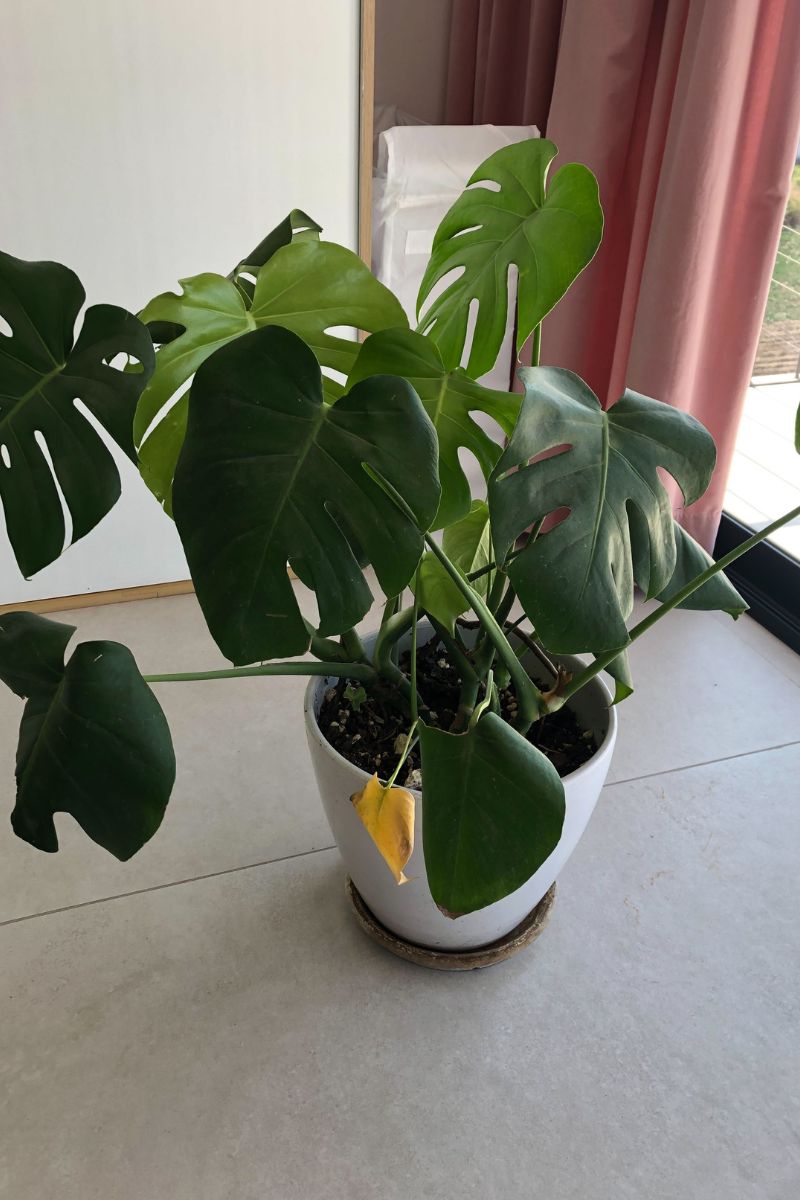
The average home interior has a humidity level between 40% and 60%, depending on the location and the time of year. A monstera prefers a level a bit higher than that, between 60% and 80%, so having a humidifier nearby is a good way to prevent leaf curl in these humidity-loving plants.
Direct sunlight & heat stress
Monsteras grow in the understory, on the trunks of trees, so they’re shaded from sunlight throughout their lives. However, they get lots of bright indirect light, so they aren’t adapted to darkness. Direct sunlight can dehydrate the leaves, making them curl, but it might also burn the leaves and turn the edges brown and crispy.
Direct light can also warm up the soil faster and evaporate moisture more quickly than the plant can absorb it, contributing to dehydration. When choosing a place for your monstera, make sure it gets lots of bright indirect light, but no direct sun exposure.
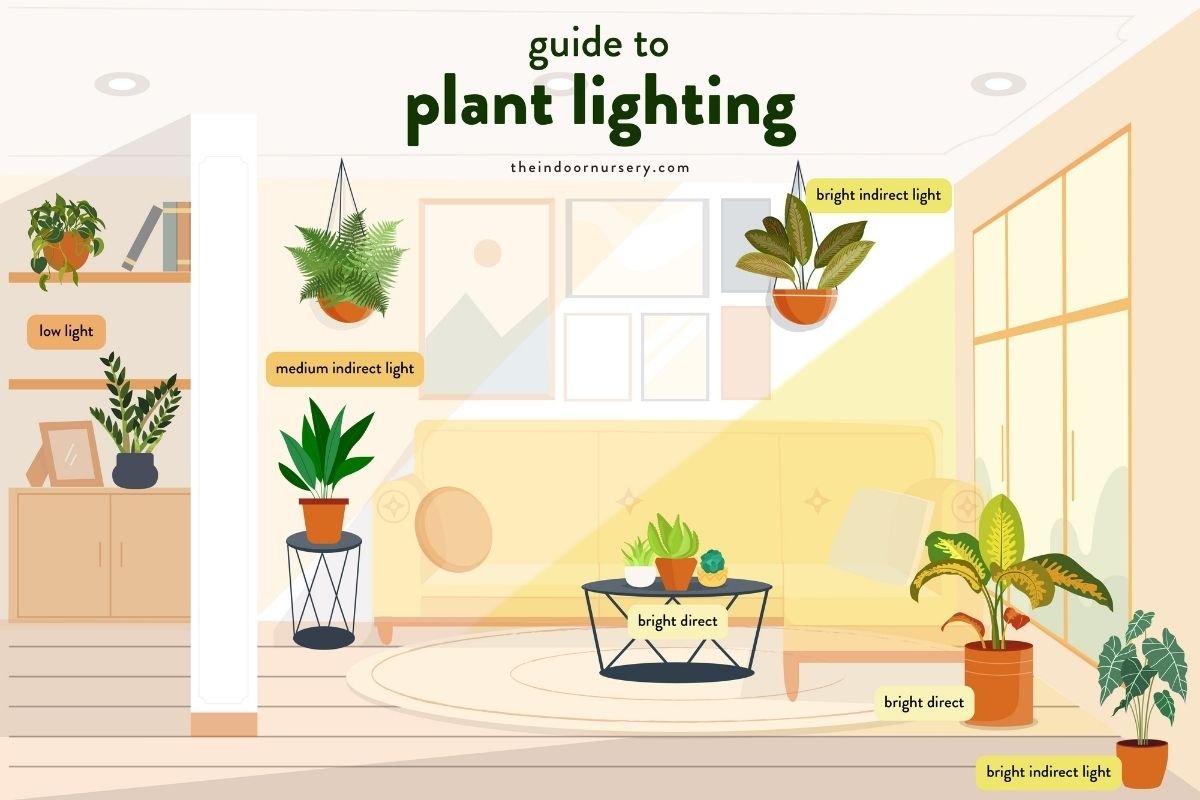
Low light
While too much light can dehydrate a plant, too little light can make your monstera’s leaves curl from weakness. Plants need light to photosynthesize and produce the sugars and starches they need for energy, which helps them process nutrients and moisture and keep their leaves firm.
Monstera leaves curling, dropping, and wilting, as well as stunted growth, are all symptoms of low light, in addition to leaf discoloration: pale green, yellowing, and even browned edges are all signs a plant isn’t producing enough chlorophyll. Make sure your monstera is in a well-lit, bright space that gets lots of indirect light from the sun or from indoor lamps.
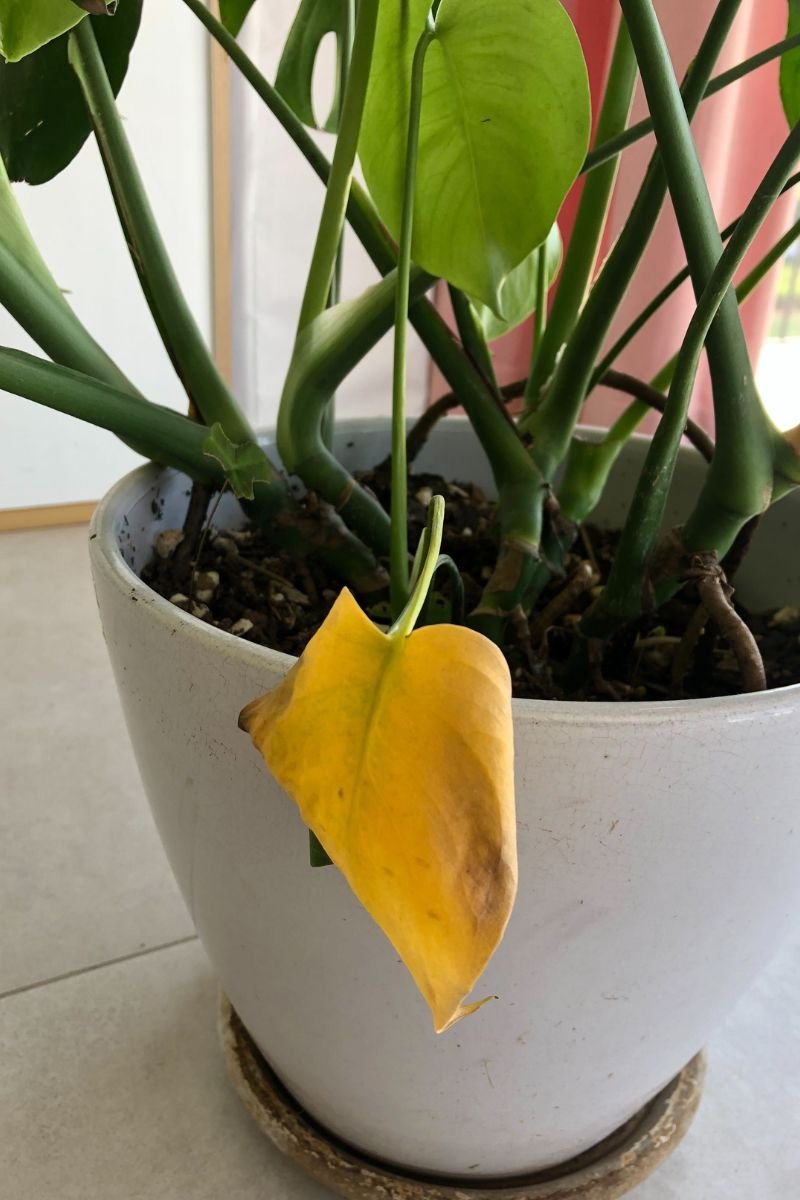
If you really want to know how much light your monstera plant is getting, then a PAR meter is a nifty tool to do just that.
Watering with hard water
Hard water may be the culprit for a monstera’s curling leaves. Tap water can contain minerals like chlorine or fluoride, while well water may have a high sodium content. The fragile roots of a monstera can be damaged by too many nutrients like those, so if you notice leaf curling or browning of the edges and tips of the leaves, consider your water source. Using distilled water, or rain water, will be gentler on your monstera’s roots than tap water.
Trust me. This matters. I’ve lost a few plants to hard water while trying to water my plants while on vacation. It’s a really sad, slow death.
Pest infestation
The dense leaves of a monstera, full of nutrient rich sap, can attract a range of pests if the conditions are right for them, and the stress of an insect infestation can cause your plant’s leaves to curl as it redirects energy towards surviving the bugs. A dry, dusty environment might attract spider mites or spiders, and you’ll notice their webs in the tight, dark spaces on your plant, while too-wet soil can lead to fungal growth and fungus gnats.
Aphids, scale, mealy bugs, and thrips can all be attracted to a healthy plant if the insects are introduced to the plant, either by leaving them outside or by bringing in a new plant that’s infected.
Keep the monstera free from pests by keeping the soil properly moist (but not wet), the air well-humidified, and the large leaves free from dust (which collects and may also interfere with photosynthesis) by using a neem oil and water mixture to clean the leaves and prevent insects from establishing themselves in the first place.
Fertilizer stress
Curling leaves can also be caused by a fertilizer imbalance. Too little of a nutrient may result in a malnourished plant, whose leaves appear curled and weak. On the other hand, too much fertilizer can change the pH of the soil and make one or another nutrient unavailable. Check the soil’s nutrient level when fertilizing to be sure to not over-apply.
Choosing an organic, slow release fertilizer, like compost or worm castings, will help avoid fertilizer burn, which can happen when too much of synthetic fertilizer is applied at once, or over time. The thin roots of a monstera can easily be damaged by the salts in synthetic fertilizer, so be sure to follow the directions of any product you use to apply it with the proper level of dilution.
Why is my monstera curling??? Other common leaf problems with monstera plants
While curling is a common symptom of a range of conditions, a monstera will show stress through its leaves in other ways. These include bending, wrinkling, and being generally limp.
Monstera plant leaves bending
The large leaves of a monstera are the reason people love this plant, but those wide, heavy leaves become difficult for the plant to hold up on its own. In nature, monsteras support their big leaves by holding on to tree trunks. If your monstera is getting too heavy to be a freestanding plant, or you want to prevent any bending in the future, consider using a moss pole or tying the stems to a stake with a soft twine. The interior support will help your plant’s stems from any damage that might result from a bent stem, including stress or breakage.
Monstera plant wrinkled leaves
Wrinkled leaves are another sign your plant may be dehydrated, overwatered, or suffering stress from root damage or pests. Inspect your plant’s growing conditions to see what the cause might be.
Limp monstera leaves
Like curling, bending, and wrinkling, limp leaves are a sign the plant needs your attention to correct for stressful conditions. Limp leaves might be a lack of firmness from dehydration, which itself may be caused by low humidity, underwatering, and even overwatering. Too much light, too little light, pests, or a fertilizer imbalance may also be the cause of limp leaves.
How to prune a damaged monstera leaf
If any of your monstera’s leaves are damaged from stress, one or more of them may need to be pruned to save the plant. If a leaf is wilted or crisp beyond being saved, it should be clipped at the base of the individual leaf, not at the base of the stalk. Multiple leaves sprout from a single stalk, which needs to remain for a new one to fill in the open space of a leaf that has been removed.
More About Monsteras
- How Often To Water Monstera Plants
- Monstera Adansonii Care Guide
- Monstera Deliciosa Care: How To Care Of Monstera Plants
- Save Your Overwatered Monstera In 4 Steps (And How Not To Do It Again)
- Scale On Monstera: What To Do And How To Save It
- Best Soil For Monstera Plants (DIY Recipe + Store-Bought Options)
- Best fertilizer for Monstera plants for gorgeous leaves

